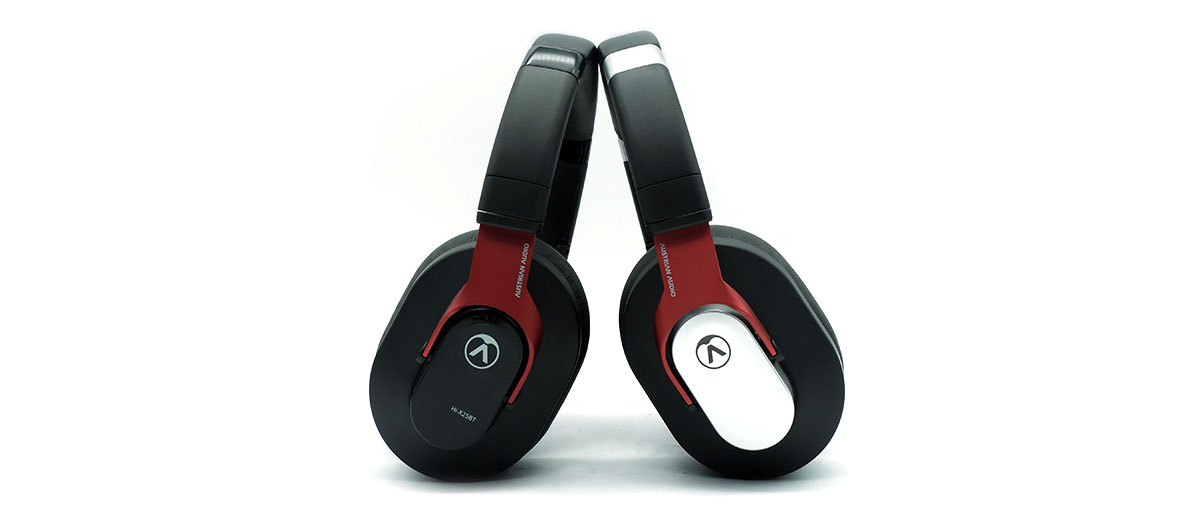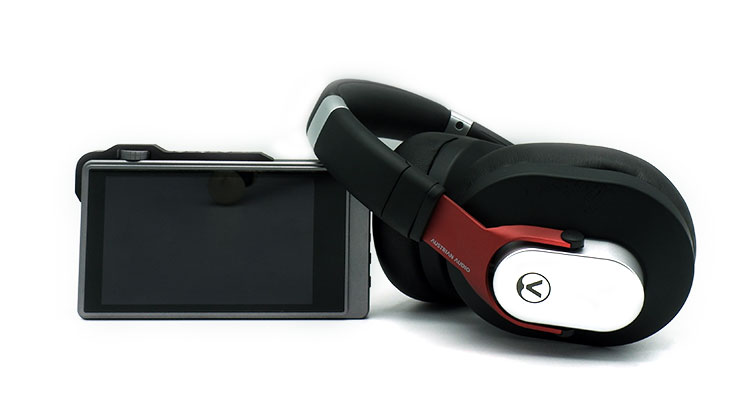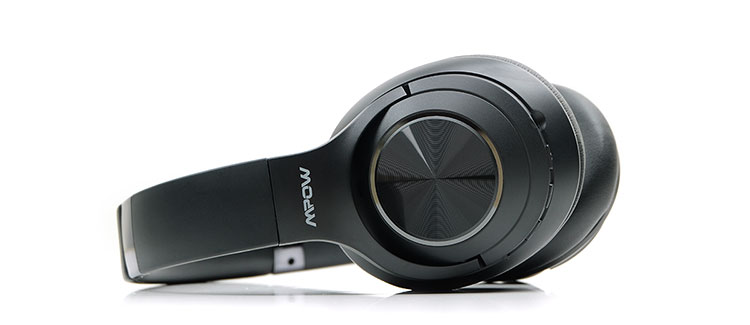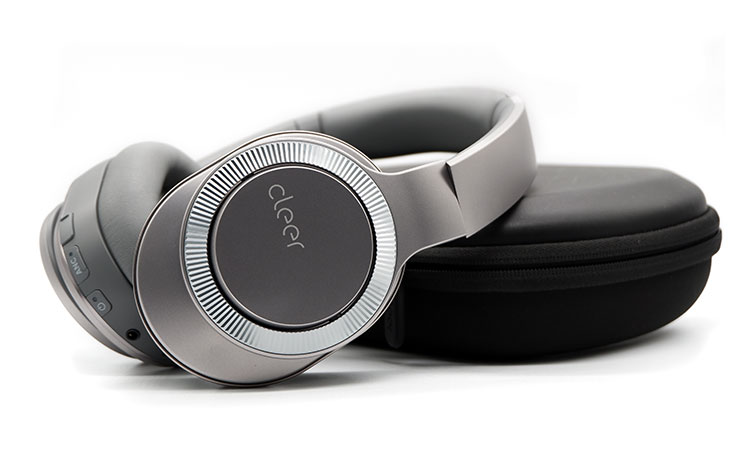Sound Impressions
Hi-X25BT
My initial sound impressions will be of the Hi-X25BT using the Bluetooth mode. A subsequent section will discuss the differences between internal DAC mode and analog mode.
Bass
Most Bluetooth headphones tend to have a more bloated bass region to cater to a wider audience, but the Hi-X25BT doesn’t stray away from their studio roots. This doesn’t mean that the Hi-X25BT lacks bass, instead, it translates to having a more linear bass response without much roll-off to speak of.
When it comes to the presentation of bass notes, the Hi-X25BT tends to have a leaner bass response leaving drum hits with a good amount of texture and hollowness but lacking that last bit of palpability. Bass guitars on the other hand have a textured and controlled response, allowing the rhythm to flow easily.
Mids
Still staying true to their studio roots, the Hi-X25BT’s vocal presentation maintains a subdued but surprisingly detailed presentation.
The Hi-X25BT doesn’t inject any euphony to the track. It remains balanced enough to present the vocal range as it should be, allowing fuller vocals of artists like Josh Groban to shine through, while more raspy vocals like Adele are equally textured.
Piano timbre maintains a good percussive quality, however, the lighter midrange presentation makes it a bit too thin to be natural. With guitars, on the other hand, the tonal quality is conveyed clearly. However, the timbre of strums and plucks are not particularly full-bodied, making it harder to make out the detail in the note texture.
Treble
Despite the thinner presentation, the treble doesn’t end up being shrill. Instead, the Hi-X25BT presents a smooth and sweet treble. With cymbal hits, the Hi-X25BT is accurate enough to present the leading edges accurately, while maintaining an ample amount of control to prevent it from being splashy or too messy.
To maintain a natural presentation and not sound artificially emphasized, the upper treble on the Hi-X25BT has a neutral extension and presence.
Staging
A naturally extended treble response seems to also translate to a natural imaging presentation. This ensures that spatial cues aren’t sharpened while having proper delineation between the images that are created within the soundscape.
The soundstage itself is expansive, and it seems that there isn’t much of a boundary to the sound. However, the images that are formed are generally confined to the space that’s closer to the listener.
Lateral imaging can generally be considered accurate since the center image, as well as the images adjacent to it, are properly placed. However, when it comes to the layering within the soundstage, it seems that they are more compressed than expected.
What impressed me the most though is the amount of dynamic range that the Hi-X25BT can produce, as it can create softer tones with gentleness while conveying the emotional content of a crescendo reasonably well.
Internal DAC mode
Since the internal DAC and the Bluetooth connection makes use of the same DAC and amp module, the tonal balance generally remains the same. However, wiring up the Hi-X25BT gives it a comparatively more energetic presentation with an uptick in the mid-bass and lower treble presentation.
Aside from more energy, the wired DAC performance gives a comparatively more full-bodied presentation. This gives the vocal range more presence, while the timbre of instruments such as guitars and pianos end up being more natural.
Despite a more full-bodied presentation, the soundstage presentation and imaging are pretty much unchanged from the wired option. Where the soundstage is expansive enough and lateral imaging remains accurate.
Analog Mode
Compared to both digital connection modes, the analog connection mode on the Hi-X25BT I believe can unleash the potential of the drivers inside.
With a more dynamic amplifier, the Hi-X25BT’s drivers can produce a more palpable and full-bodied bass response while maintaining the control that it has exhibited, allowing details to remain immediately apparent.
With the vocal range, it remains generally honest while adding a bit more air and space between the vocalist and the rest of the instruments. This also allows the pianos and guitars to have a natural timbral quality while not being forced to become too relaxed.
The biggest change, however, is in the soundstage presentation. While the soundstage remains similarly expansive, there is more space between the images within the soundstage. Also, the layering within the soundstage is more apparent allowing the images to be more natural.
Dynamic range is also improved, as crescendos become more forceful while maintaining the control to convey gentler passages with ease.
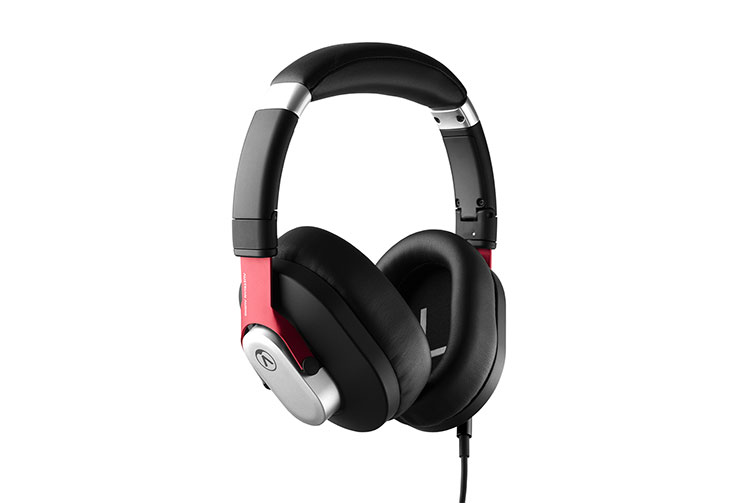
Hi-X15
Bass
I was expecting that the Hi-X15 would simply sound like the Hi-X25BT on analog mode, but I was surprised that it didn’t. Instead, I was greeted with a mid-bass uptick resulting in drum hits offering an even better sense of attack with leading edges of notes sounding more prominent.
Mids
While the Hi-X25BT’s vocal presentation is more honest, the Hi-X15 tends to lie a little by injecting a bit more euphony into the vocal presentation allowing the vocals to sound sweeter. Also, the vocal presentation tends to have a more planted fundamental, more easily conveying a sense of authority behind the vocals.
Also, with the more full-bodied and euphonic midrange presentation, the Hi-X15 presents pianos and guitars with a more natural timbre. Pianos maintain that percussive quality while allowing the reverberation of the piano’s soundboard to shine through more readily.
Treble
The Hi-X15 has a lower treble uptick which delivers a fairly energetic sound. When it comes to cymbal hits, the leading edges are conveyed with a clear and crisp quality, which is then followed by a controlled decay that’s just enough to make it shimmer while not being splashy.
The Hi-X15 upper treble on the other hand remains extended while not being particularly emphasized, allowing the airiness to have a natural quality.
Staging
With a properly extended treble range, the Hi-X15 creates a respectable amount of space between the images. Interestingly, when paired with the right amplifier, the images that are formed by the Hi-X15 are not particularly large but are of the appropriate size and accurate in terms of lateral direction and depth.
Within the Hi-X15 soundstage, the images occupy a smaller area, while the soundstage seems to extend well beyond the furthest image that is formed. However, when it’s available within the recording, the reverb and subtle timing cues can be made out to form an image of the room in which the recording was made.
Synergy
Efficiency
With a sensitivity hovering around 99dB/mW, both the Hi-X15 and Hi-X25BT demand at least a bit of power. So, weaker sources like my Xiaomi Redmi Note 9 Pro need to be maxed out to make them sufficiently loud, and even then the headphones sound very rolled off.
However, when driving them using any discrete DAC/Amp, even with entry-level offerings like the Hidizs S3 Pro, which is rated at 55mW only needs to be cranked up to 45% to reach my comfortable listening levels.
Of course, sources that can push out more power, like the AudioQuest Dragonfly Red, iBasso DX200, or the Topping A30 Pro can easily power either the Hi-X15 or the X25BT with much more ease.
Hi-X15 Pairings
Being relatively easy to power, the Hi-X15 can work with a variety of sources, but I’m impressed at how much it scales together with better-powered gear. I started with the Hidizs S3 Pro, which powered it to adequate levels, allowing some bass bloom to go through, but it generally created a more forward presentation with a wall of sound effect.
The AudioQuest Dragonfly Red has more control over the bass region steering away from any bass bloom. There is also a more balanced response, while still creating a forward presentation. However, this pairing ended up making the Hi-X15 a bit more compressed while being too relaxed to be truly enjoyable.
This time, I brought out the iBasso DX200, which ended up being the most enjoyable pairing among my portable sources. Although there isn’t much of a mid-bass hump with the DX200, the even-handed presentation allowed the Hi-X15 to flaunt it’s potential allowing leading edges of notes to be present while creating a more open and accurate soundstage presentation.
Going to desktop setups, I brought out the Topping D30 Pro/A30 Pro stack, which gelled well with the Hi-X15. This pairing allows the Hi-X15 to further show its potential as it plays to the Hi-X15’s strengths while bolstering its weaknesses particularly by expanding the imaging and soundstage while keeping the clean and crisp presentation.
Hi-X25BT Pairings
The Hi-X25BT generally pairs well with the same gear as the Hi-X15. While the internal DAC on the Hi-X25BT is resolving enough it sounds more optimal going wired with the Hi-X25BT brings out more of its potential.
Based on my assessment, there are notable improvements when going from the internal DAC into the Ibasso DX200. This pairing further opens up the Hi-X25BT, making it more expansive while maintaining the more even-handed tonal balance. It’s also surprising that the DX200 injected a bit of vocal euphony that complements the Hi-X25BT’s more honest presentation.
Moving into a desktop system also gave the Hi-X25BT an even more expansive soundstage presentation. With an uptick in the mid-bass region and keeping the lower treble presentation slightly rounded, it is energetic enough but not too fatiguing.
Select Comparisons
MPOW H21
$103.99
Compared to the Austrian Audio Hi-X25BT
Technical
Despite the relative age of the H21, the specifications are still comparable to Austrian Audio’s current offering, with both headphones offering Bluetooth 5.0, and being limited to just the SBC codec. In fact, the H21 even has noise-canceling capabilities that do an adequate job of keeping out ambient noise better than passive methods.
While the H21 has an internal DAC that is fed by the Bluetooth receiver, the DAC cannot be connected to an external source. This leaves the H21 with only 2 input options, which are Bluetooth or a wired analog connection.
When it comes to the battery rating, the H21 is rated for 40 hours of battery life, which is an extra 10 hours of listening time. However, charging the battery on the H21 takes a bit longer, since it requires around 2.5 hours to fully recharge.
Design
Looking at the 2 headphones side by side, the H21 looks less durable because it’s made of more plastic parts compared to the HI-X25BT.
However, taking a closer look at them, the construction of the 2 headphones is similar since they both have metal parts particularly with the guide rails of the adjustment mechanism. The main difference is the H21 plastic yokes instead of anodized metal ones.
Visually, the earcups on the 2 headphones are about the same size, but the opening of the earcups on the H21 is less spacious. The earpad material is similar on the 2 headphones, but the H21’s earpads give a less complete seal since the earpads are shallower.
Another feature that shows that the H21 is more dated is the micro-USB port, and the use of a 3.5mm TRS jack instead of simply using a single USB-C port for both charging, data, and analog audio. Aside from this, the H21 relies heavily on switches and physical buttons without implementing any touch controls.
Performance
The first thing that I noticed when comparing the 2 headphones is that the H21 is markedly more full-bodied. This leads to the H21 having a fuller mid-bass presentation making drum beats more palpable. However, the more forward mid-bass presentation comes at the expense of detail retrieval, making details like the hollowness of drums or bass guitars more glossed over.
With a more full-bodied presentation in the midrange, this allows the H21 to have a more planted fundamental while having a more euphonic vocal presentation. However, the details in the vocal range are more glossed over comparatively.
Pianos tend to have a more forward presentation, however, the percussive quality with keystrokes on the piano is not as apparent leaving notes less nuanced. Similarly, guitars don’t have that distinct singular quality that can be heard with each pluck and strum.
Understandably, the H21 stays on the safer side when it comes to the treble presentation, as it pushes the majority of the treble instruments to the back. This makes treble instruments sound less edgy, tipping the overall tonal balance of the H21 to the darker side comparatively.
One of the interesting things about the H21 is the ability to present an expansive soundstage. However, the images that it ultimately forms within the soundstage are comparatively less defined.
Austrian Audio Hi-X55
$329.99
Compared to the Austrian Audio Hi-X15
Technical
Being from the same company, the Hi-X55 also employs the same Hi-X (high excursion) technology that is in the Austrian Audio headphones currently available in the market.
So, they both have a Copper Clad aluminum voice coil that’s light enough to quickly respond to fast transients. They also have the same sized 44mm diaphragm that reduces the wobbling of the drivers.
Despite using the same type of technology, the Hi-X55 has a higher sensitivity of 118dB/V or 102dB/mW while having the same impedance of 25Ω. This makes the Hi-X55 easier to power, making it 2x louder for about the same power input.
Design
Coming from the same company, both headphones have a similar design language, but the Hi-X55 is a more beefed-up version. So, there are more metal parts, which include the adjustment mechanism, and even the yoke. Each part is more beefed up translating to a thicker headband and more substantial hinge mechanism.
Both headphones also have foam on top of the headband, but the one on the Hi-X55 is removable with Velcro which means that it may be replaced if it wears down.
The Hi-X55 has larger earcups, which means that it also has larger earpads and a larger opening, but neither gave me any issue of fitting my ears in the earpads. The Hi-X55’s earpads are easier to replace since they’re just clipped onto the earcups instead of inserted and screwed on.
Interestingly, the cable for both headphones is interchangeable, so ordering a cable from Austrian Audio for various lengths is an option for both.
Performance
There is a resemblance when it comes to the presentation of both headphones, particularly with the midrange, where both have a clear and textured midrange presentation. However, the Hi-X55’s more forward midrange imaging makes pianos, guitars, and even cellos more front and center compared to the Hi-X15.
Listening to the bass, the Hi-X55 has more of a reference tuning, making it comparatively more rolled off and keeping the midbass region in check. This results in a better portrayal of the texture in drum hits compared to the Hi-X15. The X55 also has a more accurate sense of attack and decay in each drum hit allowing successive drum hits to be more distinct.
One of the most prominent differences from the Hi-X15 is the Hi-X55’s more forward treble range though hardly one you could classify as sounding sibilant.
This allows treble details to be more easily picked up on compared to the Hi-X15 while giving mid-range instruments/vocals a more accurate harmonic balance and making them comparatively sweeter.
When listening to the soundstage, both headphones don’t sound particularly congested as they both have an expansive soundstage. However, when it comes to the imaging presentation, the Hi-X55 takes it up a notch by creating better layering in the imaging while creating slightly larger and taller images within the stage.
Cleer Flow II ANC Headphones
$199
Compared to the Austrian Audio Hi-X25BT
Technical
The Flow II can similarly be classified as a Bluetooth headphone, but it uses an older Bluetooth 4.2 version while having decoding capabilities up to aptX HD.
Aside from the more advanced codecs available, the Flow II also implements different modes. This means that Flow II has 3 modes: a normal mode, an ambient mode that allows outside noise to be amplified, and an ANC mode, which cancels the outside noise. This is a step up from the passive isolation that is available on the Hi-X25BT.
Both headphones use a USB charger, but the one on the Flow II is limited in use as it only works as a charging port. It can’t be used as a digital input port, and the analog input goes through a 3.5mm jack on the other earcup.
Design
Putting the 2 headphones side by side, I would have guessed that they have the same fit particularly with the earcups being the same size. However, the Flow II’s earpads have much thicker walls, which results in making it feel more like an on-ear headphone instead of an over-ear design.
Another difference is that the Flow II has more plastic parts, particularly with the headphone yokes. However, both headphones seem to be durable enough as the Flow II is made of high-grade plastic parts.
Despite having less vertical articulation on the earcups, the Flow II still manages to be similarly comfortable since the earcups also swivel horizontally. Both headphones also have a pad on top of the headband to ensure that there won’t be hotspots on top of my head.
The Flow II has some physical buttons that manage the power, ANC mode, and a dedicated google assistant button. Both headphones implement touch controls, but the touch controls on the Flow II are a bit more complicated, making it a bit less accurate as it entails different swiping motions instead of simple taps and swiping along an axis.
Performance
Compartmentalizing the bass region of the 2 headphones, the Flow II immediately feels more forward and full-bodied. However, the textures within the bass region are less defined, making it a bit harder to discern the differences between the types of drums and the hollowness of drum hits.
When it comes to the midrange, the vocals are also a bit more euphonic, but less textured. So, the more textured quality of vocal performances such as Adele is less evident. However, midrange instruments are similarly natural with the Flow II giving them a comparatively warmer tonal balance.
With the treble presentation, the Flow II recreates cymbal hits with a similar level of ease making the leading edges more evident. The detail retrieval capability of the Flow II in the treble range is comparable making it easy to pick out the nuance in cymbal hits and even wind instruments.
However, treble notes tend to linger on a touch longer comparatively, making some successive notes less distinct.
Despite the Flow II being almost an on-ear design, and having ANC on for optimal conditions, it creates a similarly sized soundstage presentation. However, the placement of the images are not as defined or delineated.
Our Verdict
The Hi-X25BT is still unmistakably tuned by Austrian Audio. It maintains a natural midrange, allowing a forward vocal and instrument presentation. However, this time, the Hi-X25BT has a mid-bass uptick making it a more energetic sounding headphone.
Surprisingly, the Hi-X15 isn’t simply the Hi-X25BT without Bluetooth capability. Instead, it creates a niche for itself by having a similar tonal presentation while allowing upstream sources to further enhance its sound staging and imaging capability more readily.
While the Hi-X15 and Hi-X25BT can be considered as Austrian Audio’s foray into a less studio-focused market both headphones stay true to their roots. Both have an enjoyable and energetic tuning with a natural and accurate presentation.
Austrian Audio Hi-X15 Specifications
- Frequency range: 12 Hz – 24 kHz
- Sensitivity: 113 dBspl/V
- Impedance: 25Ω
- Input Power: 150mW
- Cable (detachable): 4 m
- ConnectorL 5mm (1/8”)
- Dimensions: 250 x 170 x 80 mm
- Weight (without cable): 255 g
Austrian Audio Hi-X25 BT Specifications
- Frequency range: 12 Hz – 24 kHZ
- Sensitivity: 113 dBsl/V
- Impedance: 25 Ω
- Input Power: 150 mW
- Run Time: 30 h
- Bluetooth® Version: 0
- Bluetooth® 5.0 supported codecs: A2DP, AVRCP, HSP, HFP
- Audio Codec: SBC
- Controls: Touch Control
- Jack cable: 4 m, 3.5mm (1/8”)
- USB Cable: 2m USB-C
- Connector: 5mm (1/8”)
- Adapter: USB-C® -> USB-A
- Battery Type: Built-in Lithium Polymer
- Dimensions: 205 x 170 x 80 mm
- Weight (without cable): 270 g

